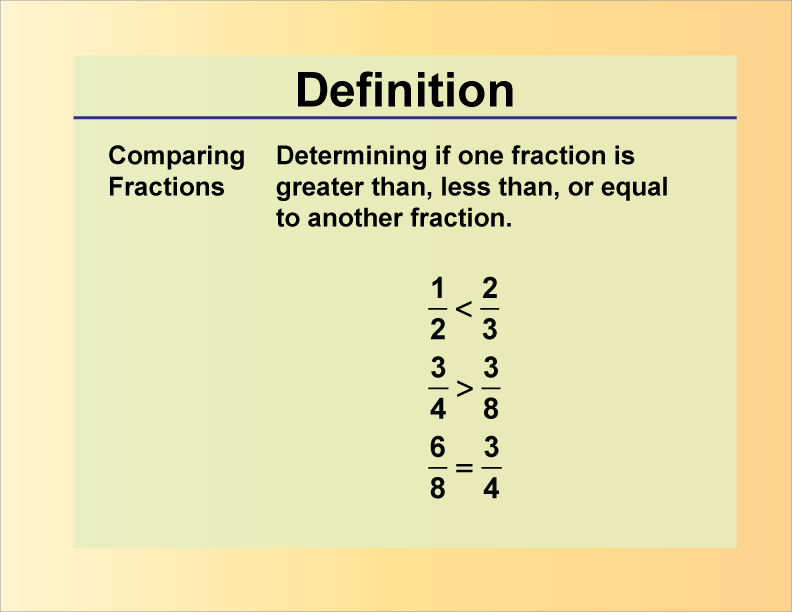
Display Title
Definition--Fraction Concepts--Comparing Fractions
Display Title
Comparing Fractions

Topic
Fractions
Definition
Comparing fractions involves determining which of two fractions is greater, or if they are equal, by considering their numerators and denominators.
Description
Comparing fractions is a fundamental concept in understanding fractions and their relative sizes. It involves analyzing the numerators and denominators to determine which fraction represents a larger or smaller part of a whole. For fractions with the same denominator, the fraction with the larger numerator is greater. Conversely, for fractions with the same numerator, the fraction with the smaller denominator is greater. When fractions have different numerators and denominators, they can be compared by finding a common denominator or by converting them to decimal form.
For example, to compare 3/4 and 2/3, one approach is to find a common denominator, such as 12. Converting both fractions, we get $$\frac{3}{4} = \frac{9}{12}$$ and $$\frac{2}{3} = \frac{8}{12}$$ Since 9/12 is greater than 8/12,
3/4 > 2/3
Alternatively, converting to decimals, $$\frac{3}{4}$$ equals 0.75 and $$\frac{2}{3}$$ equals approximately 0.666, confirming that 3/4 is greater. Understanding how to compare fractions is crucial for solving problems involving fractions in real-life scenarios, such as dividing resources or understanding proportions. Mastery of this skill also lays the groundwork for more advanced mathematical concepts, including algebra and probability.
For a complete collection of terms related to fractions, click on this link: Fractions Collection.
| Common Core Standards | CCSS.MATH.CONTENT.3.NF.A.3.D, CCSS.MATH.CONTENT.4.NF.A.2 |
|---|---|
| Grade Range | 3 - 5 |
| Curriculum Nodes |
Arithmetic • Fractions • Compare and Order Fractions |
| Copyright Year | 2021 |
| Keywords | comparing fractions, fractions |